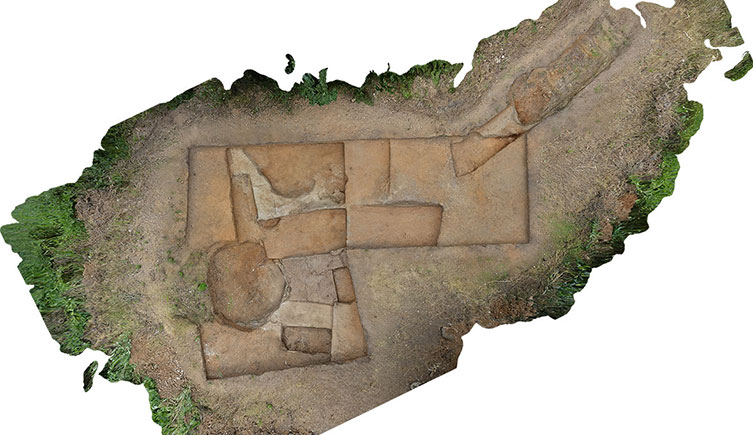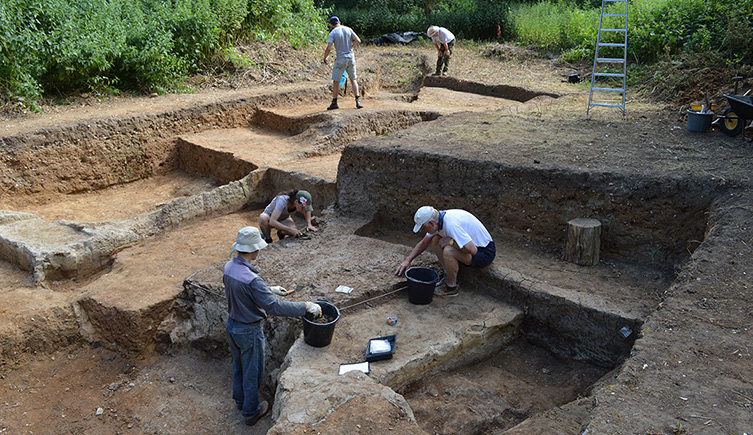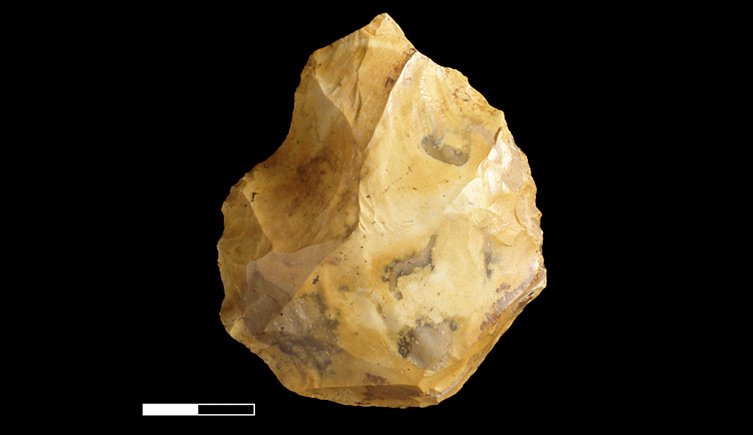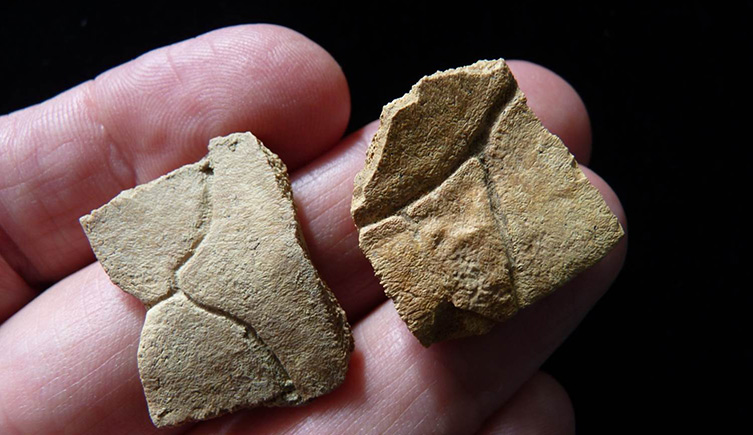Successful colonisers

Computer-generated plan view of the faunal area at Barnham
Project summary
- Focus: Early human tool use and analysis of flora and fauna at East Farm in Barnham, UK
- Time period: 500,000-300,000 years ago
- Funding:
Calleva Foundation (Pathways to Ancient Britain)
Evidence suggests that human populations in northern Europe expanded significantly from around 500,000 years ago, with an increase in the number and size of sites. By this time, technological advances may have allowed humans to become better adapted to northern environments.
Sites can be divided into:
- those associated with the now extinct Bytham River, pre-dating the Anglian Glaciation that occurred around 450,000 years ago
- those post-dating the Anglian Glaciation
Together the sites form an unparalleled record for understanding these new technologies.
The Breckland of Suffolk and Norfolk has a remarkably rich record for the post-Anglian period and, importantly, includes sites with excellent preservation of environmental data.
One such site is at East Farm, Barnham, where new excavations have taken place since 2013, run in part as a student training school in conjunction with Leiden University.

Excavations at the faunal area of East Farm, Barnham
East Farm, Barnham
The site at East Farm is in an old clay pit, known since the turn of the twentieth century to contain Lower Palaeolithic artefacts. Earlier excavations were conducted between 1989 and 1994, providing artefact assemblages and floral and faunal remains.
The environmental evidence suggests a slow-moving stream surrounded by grassland and deciduous vegetation. The channel eventually dried out and the deposits and artefact assemblages date to the Hoxnian Interglacial, around 400,000 years ago.
There are three main areas of research for this site.
1) Reinvestigation of handaxe/non-handaxe assemblages
We are reinvestigating two different lithic assemblage types at the site - one without handaxes (Clactonian) and one with handaxes (Acheulian). Research during the 1990s concluded that both assemblage types were found in similar deposits at different parts of the site and were therefore at least geologically contemporary.
The favoured interpretation was that the same group of people was responsible for both assemblages, but with different activities and tools in the two areas.

Handaxe found at Barnham, scale=2cm
A more complex picture is emerging through our recent fieldwork, which re-examines the evidence with improved resolution of the geology. It seems that the non-handaxe assemblage is slightly earlier than the handaxe assemblage, and that two separate human populations are represented.
This leads to questions such as:
- What is the time gap between the occupations?
- Can different populations be identified at other sites of this age?
- Were different hominin species responsible for the different industries?
- Can other technological differences be identified?
2) Interpreting evidence of burning
Abundant quantities of burnt flint have been found at Barnham, but it is not clear whether this is from a natural forest fire or the controlled use of fire by humans. Some of the earliest evidence of human fire use in Europe was found at nearby Beeches Pit, also dating to around 400,000 years ago.
If our work at Barnham provides evidence of more widespread use of fire, this may shed light on a major turning point in early human evolution.

Carapace fragments from a European pond terrapin, Emys orbicularis
3) Documenting flora and fauna
A final aim is to increase our knowledge of the floral, molluscan and vertebrate assemblages recovered at East Farm. It is one of the richest sites in Britain for amphibians and reptiles, with exotic species such as tree frogs and European pond terrapins. There are also exotic mammals, including extinct species of rhinoceros and elephant.
A large-scale extraction and sieving programme has begun and the results are adding to our understanding of the area's fauna. We are also using new pollen analyses to learn more about the local vegetation. Excavations are ongoing.
Main collaborators
- Nick Ashton
British Museum - Simon Lewis
Queen Mary University of London - Beccy Scott
British Museum - Rob Davis
Queen Mary University of London - Claire Lucas
British Museum - Mike Field
Leiden University, Netherlands - Erica van Hees
Leiden University, Netherlands - Sylvia Peglar
- Peter G Hoare
Queen Mary University of London and the British Museum
Pathways to Ancient Britain
This research is part of Pathways to Ancient Britain (PAB), a suite of projects aimed at investigating the earliest occupations of Britain. PAB is funded by the Calleva Foundation.
- Visit the NHM's main PAB page
- Find out more about the work at Barnham, including blog updates, on the Pathways to Ancient Britain website
Publications
Ashton N, Lewis SG, Parfitt SA, Davis RJ and Stringer C. (2016). Handaxe and non-handaxe assemblages during Marine Isotope Stage 11 in northern Europe: recent investigations at Barnham, Suffolk, UK. Journal Of Quaternary Science 31(8) 837–843.
Ashton NM, Lewis SG, Parfitt SA (eds, 1998). Excavations at East Farm, Barnham, Suffolk, 1989-94, British Museum Occasional Paper (125).
Ashton, NM et al (1994). Excavations at the Lower Palaeolithic site at East Farm, Barnham, Suffolk 1989-92, Journal of the Geological Society of London (151), pp 599-605.
Ashton, NM et al (1994). Contemporaneity of Clactonian and Acheulian industries at Barnham, Suffolk, Antiquity (68), pp 585-589.